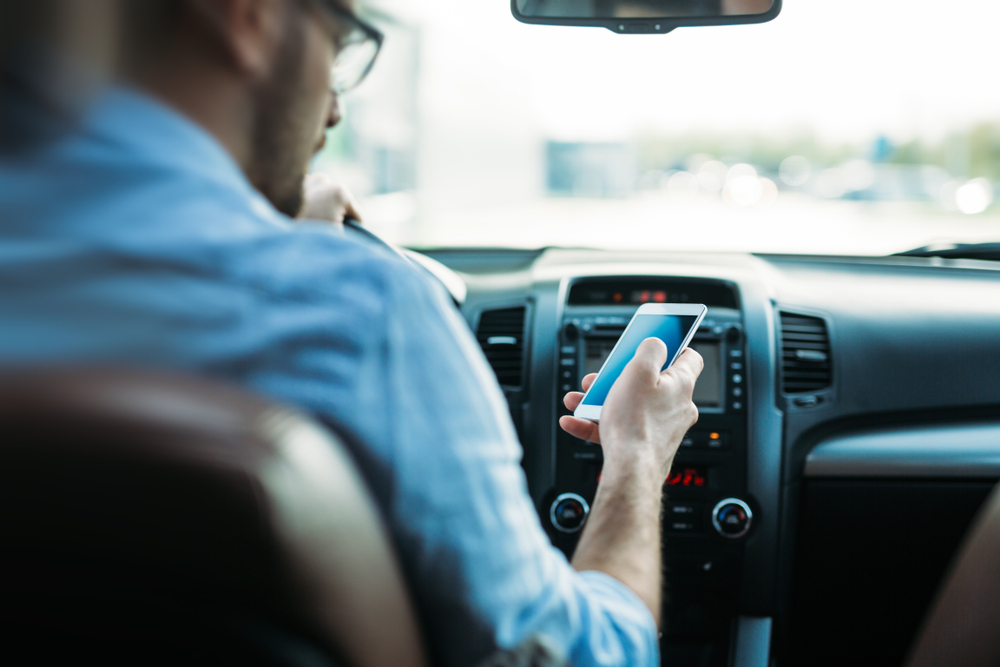Using your phone at a red light is a common question for many drivers concerned with safety and legal consequences. In most places, it is illegal to use your phone while driving, even when stopped at a red light. Laws are designed to minimize distractions and keep you focused on the road at all times, including brief stops.
At Wyatt Injury Law Personal Injury Lawyers, we understand how traffic violations involving phone use can lead to serious consequences, including personal injury cases. Whether you’re texting, browsing, or making calls, the risk of being cited or causing an accident remains significant. Knowing the rules helps you avoid trouble and protects your safety and those around you.
Understanding the Legal Status of Phone Use at Red Lights
State-by-State Laws and Restrictions
Laws vary widely across the United States. In many states, such as California and New York, you are considered to be operating your vehicle when stopped at a red light, meaning handheld phone use is generally prohibited. These laws often require hands-free technology, such as Bluetooth or a speakerphone, to legally make or answer calls.
Some states have specific bans on texting or manual phone interaction while stopped in traffic, equating this to distracted driving. Other states may have less strict or unclear rules, creating a gray area. Additionally, red light cameras only issue tickets for running a red light or failing to stop fully, not for phone use.
Key Legal Definitions of Distracted Driving
"Use" of a phone is broadly defined in law. It includes composing, reading, or sending texts, emails, or social media messages, not just making calls. Operating a vehicle "while stopped" generally counts as driving, so phone use at a red light often qualifies as distracted driving.
Law enforcement and courts may interpret actions like picking up or holding the phone as violations. Even brief interactions with your device can result in citations under handheld phone bans. The key point is that most laws do not distinguish between moving and stopped states if the vehicle is in traffic.
Common Exceptions and Grey Areas
Some laws allow limited phone use if it can be done with a single swipe, like answering a call using a hands-free system. Emergency calls are typically exempt from restrictions. However, texting or prolonged handling of the device is almost always prohibited, even when stopped.
Enforcement can vary, and some judges may interpret laws differently depending on the situation or the number of prior offenses. Repeat violations can lead to harsher penalties, including license suspension. You should be aware that distractions at red lights can still be considered inattentive driving, regardless of local legislation.
Consequences and Risks of Using Your Phone at a Red Light
Fines and Demerit Points
If you use your phone while stopped at a red light, you could face fines determined by state law. These fines typically start between $25 to $200 for a first offense. Repeat offenses may lead to higher fines, often between $400 and $600.
Many states treat texting or holding a handheld phone at any time you're behind the wheel as illegal. You may also receive demerit points on your driving record, which can affect your insurance rates and license status.
Keep your foot firmly on the brake and avoid phone usage, as even moving slightly while handling your phone can be cited as distracted driving.
Accident Liability and Insurance Issues
Using your phone at a red light reduces your situational awareness and reaction time. If an accident occurs, your phone use can lead to partial or full liability in the crash. Insurance companies may view distraction due to phone use as negligence. This can raise your premiums or lead to denial of claims if you are found responsible for the accident.
You also risk causing a rear-end collision or other accidents if you miss the light change because of phone distraction.
Impact on Personal Injury Claims
If you're injured in an accident while using your phone at a red light, your phone use can undermine your personal injury claim. Opposing parties may argue your distracted state contributed to the collision.
This can reduce or negate compensation for your injuries, pain, and property damage. Documentation or eyewitness accounts showing phone use may influence the outcome.
Being on your phone at a red light introduces doubt about your attentiveness, weakening your legal position and support for your claims.
The Broader Impact of Cell Phone Use on Driving Safety
Research shows that cell phone usage while waiting at a stop light or traffic light is one of the leading causes of distracted driver incidents. Even when a driver thinks they can remain focused, the brain remains distracted for several seconds after interacting with a handheld device. This delay means that by the time the light turns green, reaction times are slower, and intersection accidents become more likely.
Statistics highlight how many drivers admit to unsafe habits such as checking notifications, answering a call on a mobile phone, or letting drivers read text messages while stopped. American drivers, in particular, face increasing risks at intersections because of inadequate surveillance and driving errors caused by smartphone use. Over half of surveyed motorists confessed to some form of cellphone use while waiting at a stop sign or red light, which shows how deeply this issue affects driving habits.
The law is clear: when a police officer pulls a distracted driver over for cell phone use, the consequences can go beyond a simple traffic ticket. First time offenders may face fines and points on their driver’s license, while repeat offenses can increase insurance premiums dramatically. Other consequences include complications in filing an insurance claim, loss of a full ride scholarship if tied to driving infractions, or even lost wages if accidents result in injuries.
In legal cases, cell phone records and testimony from a police officer can be used as evidence of distraction. A law office handling motor vehicle accidents will often subpoena wireless telephone or cellphone use data to prove negligence. This can undermine a defense and make it harder to claim fair compensation. Drivers must understand that the best bet is always to drive safely, avoid handheld devices, and remain at full capacity behind the wheel.
By avoiding smartphone use and taking several actions to reduce distractions, drivers not only protect themselves but also protect other drivers on the road. Pulling over before you start driving is a safer choice that minimizes risk and keeps your driver’s attention where it belongs—on the road.
Staying Safe and Legal at Red Lights
Safety Tips for Drivers
Even when stopped, using your phone divides your attention. It’s important to keep your focus on the road and the surrounding traffic signals. Avoid texting, calling, or scrolling while waiting, as these actions still qualify as distracted driving in many states.
Keep your phone out of reach or use Do Not Disturb features to prevent temptation. Monitor the light and your environment instead. If you need to use your device, pull over completely to a safe area off the road.
Practice situational awareness by watching for sudden traffic changes or pedestrians. This reduces the chance of delayed reactions that could cause accidents or violations.

Alternatives to Phone Use While Waiting
Instead of using your phone, consider these options to stay focused and calm:
- Review your planned route mentally.
- Listen to hands-free audio or podcasts already playing.
- Use the moment for deep breathing or calming techniques.
- Check your mirrors and surroundings to prepare for the green light.
If you must send a quick message, use voice commands or hands-free systems legally installed in your vehicle. Avoid physically holding or interacting extensively with your device.
These alternatives reduce risks while respecting laws and improve your readiness for driving once the light changes.
Wyatt Injury Law Personal Injury Lawyers’s Role in Distracted Driving Cases
If distracted driving causes an accident, Wyatt Injury Law Personal Injury Lawyers specializes in handling these specific cases. They understand the complexities of proving distraction at red lights and the consequences that follow. You can rely on Wyatt Injury Law Personal Injury Lawyers to:
- Collect evidence such as traffic camera footage or witness statements.
- Navigate state laws related to phone use and traffic violations.
- Advocate for your rights and seek appropriate compensation if injured.
Their expertise helps ensure that distracted driving incidents are taken seriously and responsible parties are held accountable. With their support, you can focus on recovery while they manage the legal process efficiently.
